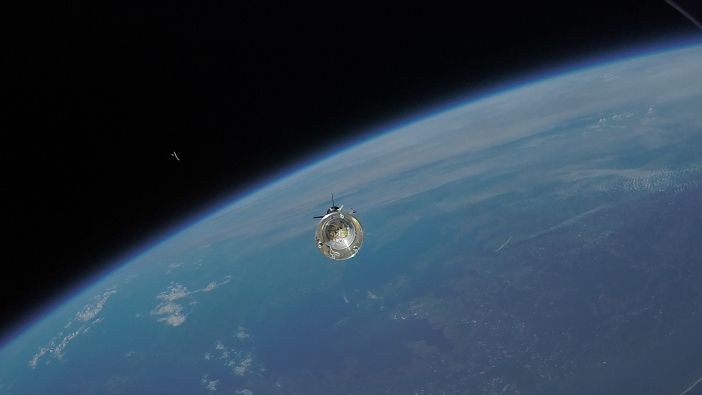NASA has completed testing the parachute that will be used by its Mars 2020 Rover’s landing system.
NASA’s Jet Propulsion Laboratory’s (JPL) Advanced Supersonic Parachute Inflation Research Experiment (ASPIRE) concluded in September with a series of sounding rocket tests to help engineers decide which parachute design to use on the Mars 2020 mission.
Each of the three parachutes were launched by 58ft (18m) tall Black Brant IX sounding rockets, released and then deployed when onboard sensors determined the payloads had reached the appropriate height and speed.
During the final test the parachute was deployed at an altitude of 38km at Mach 1.8. It took just four tenths of a second to deploy, the fastest inflation ever of a parachute this size, with a peak load of almost 70,000 lbf (311kN).
The parachute is made of nylon, Technora and Kevlar fibers and will be used when the rover lands on Mars in February 2021.
Two different parachutes were evaluated during ASPIRE. The first test flight carried almost an exact copy of the parachute used to land NASA’s Mars Science Laboratory successfully on the Red Planet in 2012. The second and third tests carried chutes of similar dimensions but reinforced with stronger materials and stitching.
Following the tests, NASA’s Mars 2020 mission management and members of its Entry, Descent, and Landing team decided that the strengthened parachute had passed its tests and is ready for its Martian debut.
John McNamee, project manager of Mars 2020 at JPL, said, “Mars 2020 will be carrying the heaviest payload yet to the surface of Mars, and like all our prior Mars missions, we only have one parachute and it has to work.
“The ASPIRE tests have shown in detail how our parachute will react when it is first deployed into a supersonic flow high above Mars.”
The 67,000 lb (37,000kg) load experienced in the final test was the highest ever survived by a supersonic parachute. The load is about 85% higher than the one scientists expect the Mars 2020 parachute to encounter during its deployment in Mars’ atmosphere.
Ian Clark, the test’s technical lead from JPL said, “Earth’s atmosphere near the surface is much denser than that near the Martian surface, by about 100 times. But high up – around 23 miles (37km) – the atmospheric density on Earth is very similar to 6 miles (10km) above Mars, which happens to be the altitude that Mars 2020 will deploy its parachute.”





